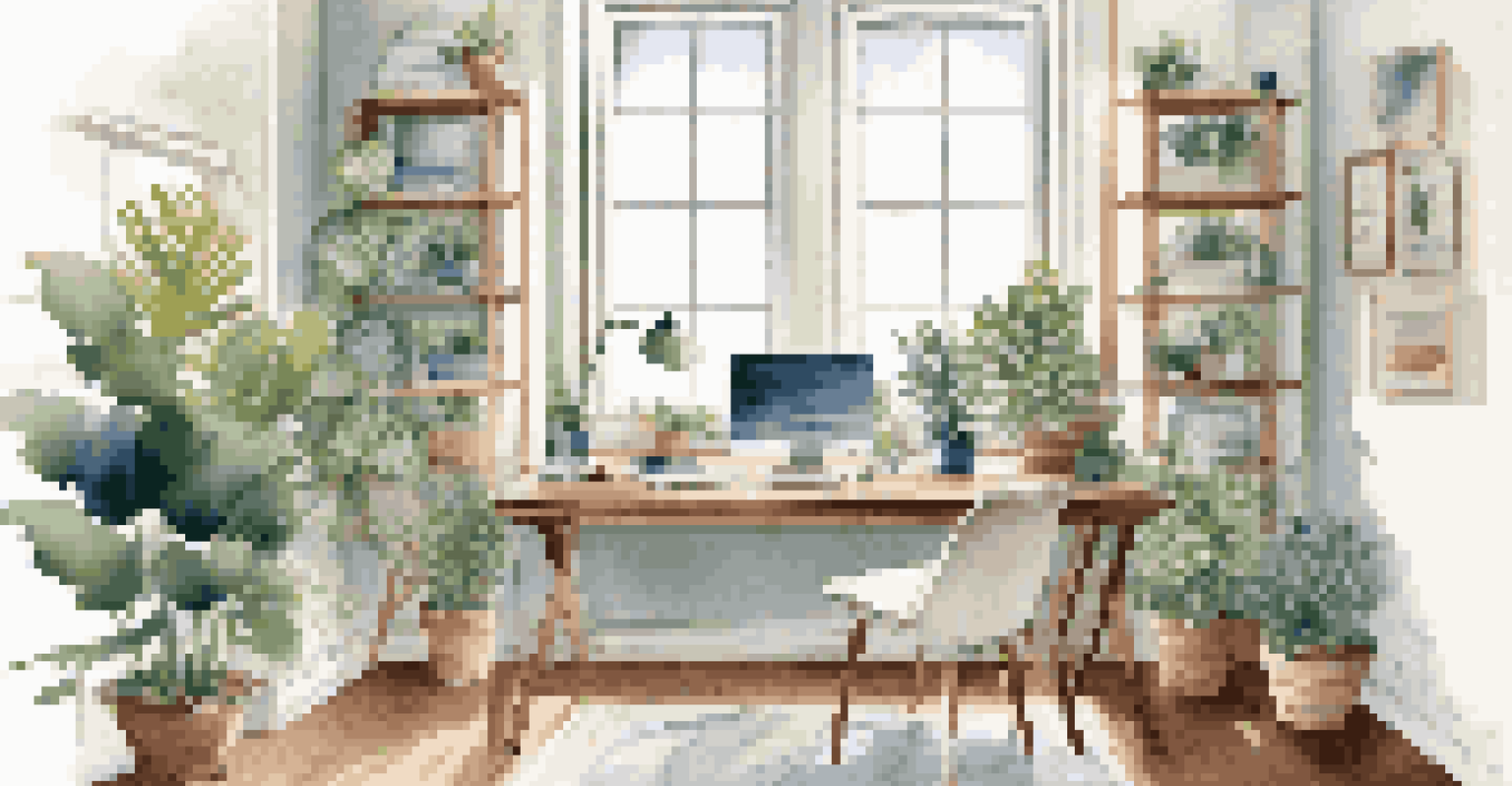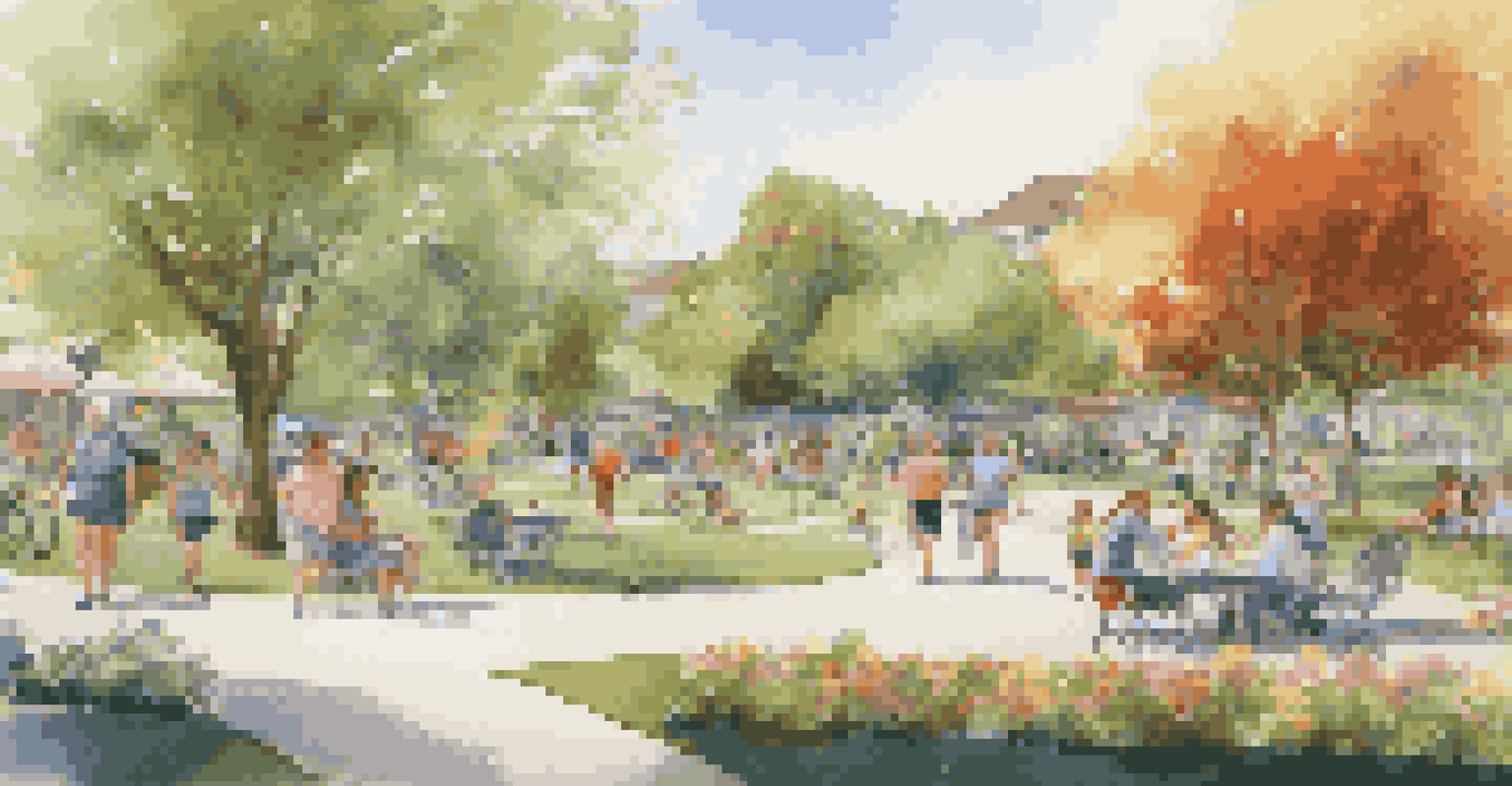Changing Dynamics of Housing Markets Amid Remote Work Culture

The Rise of Remote Work and Its Impact on Housing
The surge in remote work has dramatically reshaped housing preferences. People are no longer tied to office locations, allowing them to seek homes in areas that suit their lifestyle rather than their job. This means that suburbs and rural areas are becoming increasingly appealing, as they offer more space and often a lower cost of living.
The future of work is not about where you work, but how you work.
With the flexibility to work from anywhere, many individuals are prioritizing home features that enhance their work-life balance. Home offices, outdoor spaces, and proximity to nature are now high on the checklist for prospective homebuyers. This trend has led to a notable shift in demand, particularly in previously overlooked markets.
As companies adapt to this new work culture, the housing market is responding dynamically. The influx of buyers into less urbanized areas is not just a temporary change; it's a rethinking of what a 'home' means in the context of work and lifestyle. This paradigm shift sets the stage for long-term changes in housing dynamics.
Changing Buyer Preferences: What Do Homebuyers Want Now?
Today's homebuyers have a different set of priorities compared to pre-pandemic times. They are looking for homes that accommodate their new remote work setups, which often include dedicated office spaces or nooks. Additionally, buyers are more inclined to choose properties with multiple bedrooms to allow for flexibility in use—whether for home offices, guest rooms, or play areas.

Sustainability has also become a key factor in buyer decisions. More people are seeking energy-efficient homes or properties that utilize sustainable materials, reflecting a growing awareness of environmental impact. This has led to an uptick in demand for homes that not only meet personal requirements but also align with broader ecological values.
Remote Work Shifts Housing Demand
The rise of remote work has led buyers to prioritize homes that offer space for home offices and outdoor areas, shifting demand away from urban centers.
Moreover, individuals are increasingly considering the community aspect of their potential new homes. Access to parks, recreational activities, and vibrant neighborhoods has taken precedence over mere proximity to urban centers, as buyers seek a sense of belonging in their new environments.
Suburban Boom: The Shift Away from Urban Centers
As remote work solidifies its place in the corporate landscape, suburban areas are experiencing a renaissance. Once considered merely a place to sleep after a long day in the city, suburbs are now thriving hubs that offer a blend of tranquility and accessibility. This shift is driving up property values in these areas, making them attractive to both buyers and investors.
Home is not a place, it's a feeling.
People are flocking to suburban neighborhoods for their spacious homes and family-friendly amenities. The desire for more square footage, yards, and community-oriented living is steering buyers away from crowded urban settings. It's not just about more space; it's about creating a lifestyle that balances work and play.
However, this suburban boom is also prompting local governments to rethink infrastructure and services. Increased demand for public transport, schools, and recreational facilities is driving investments in these areas, ensuring they can cater to the influx of new residents looking for a better quality of life.
Urban Adaptations: How Cities Are Responding
Cities are not simply sitting back and letting the suburban appeal overshadow them; they are innovating to enhance their own attractiveness. Urban areas are adapting by emphasizing the importance of mixed-use developments that combine residential, commercial, and recreational spaces. This approach aims to create vibrant communities where residents can live, work, and play without needing to leave the city.
Additionally, cities are investing in improving outdoor spaces, parks, and public amenities to entice residents. The focus is on making urban living more appealing in the context of remote work, where access to nature and community gatherings can enhance the overall living experience. This shift reflects a strategic effort to retain current residents while attracting newcomers.
Suburbs Gain Popularity Among Buyers
As remote work becomes more common, suburban areas are seeing increased interest due to their spacious homes and family-friendly amenities.
Moreover, urban developers are increasingly recognizing the need for flexible workspaces and coworking environments. By providing options for remote workers who may still want occasional office access, cities are fostering a blended lifestyle that accommodates both remote work and traditional office culture.
Real Estate Trends: What Agents Are Seeing
Real estate agents are witnessing firsthand how remote work is influencing buyer behavior and market trends. Many agents report a surge in demand for properties that offer home office capabilities, indicating that buyers are prioritizing functional spaces. This has led to a market where listings highlighting office spaces often sell faster than those that don't.
Agents are also seeing an increase in virtual home tours and online transactions. The necessity for social distancing during the pandemic has accelerated the adoption of technology in real estate. Buyers are now more comfortable making significant decisions based on virtual experiences, which broadens the market reach for sellers.
Furthermore, agents are adapting their marketing strategies to emphasize lifestyle benefits over mere property features. Highlighting proximity to parks, schools, and community activities is becoming essential as buyers seek a well-rounded living experience. This trend underscores the evolving role of real estate professionals in a changing landscape.
Investing in Real Estate: New Opportunities and Risks
The shifting dynamics of housing markets present both exciting opportunities and potential risks for investors. With the rise of remote work, there's a promising market for single-family homes in suburban areas. Investors are increasingly looking to capitalize on this trend by purchasing properties that cater to the evolving needs of homebuyers.
However, the landscape is not without its challenges. Investors must remain vigilant about market fluctuations and the potential for over-saturation in certain areas. As more buyers flock to suburban markets, it's crucial for investors to conduct thorough research to identify the right opportunities without falling into the trap of speculative buying.
Cities Adapt to New Living Trends
Urban areas are innovating with mixed-use developments and improved public spaces to remain attractive to residents in the evolving housing market.
Additionally, the long-term viability of remote work trends is still uncertain. Investors need to consider the possibility of a return to traditional office environments or hybrid models. A strategic approach that emphasizes adaptability and resilience will be essential for navigating the complexities of this new real estate reality.
Future Outlook: What Lies Ahead for Housing Markets
As remote work becomes a permanent fixture in the modern work landscape, the housing market will continue to evolve. Experts predict that the trend of urban exodus might stabilize, leading to a more balanced demand for properties in both urban and suburban areas. This could foster healthier market conditions and greater price stability.
Moreover, we can expect to see ongoing innovations in housing design. Homes that integrate technology for remote work, sustainability, and community engagement are likely to become the norm. This reflects a growing recognition of the importance of adaptability in homes as lifestyles and working conditions change.

Ultimately, the future of housing markets will likely be defined by flexibility and a more holistic understanding of living spaces. As people continue to seek homes that reflect their values and enhance their quality of life, the real estate landscape will adapt, ensuring that it meets the needs of a diverse and evolving population.